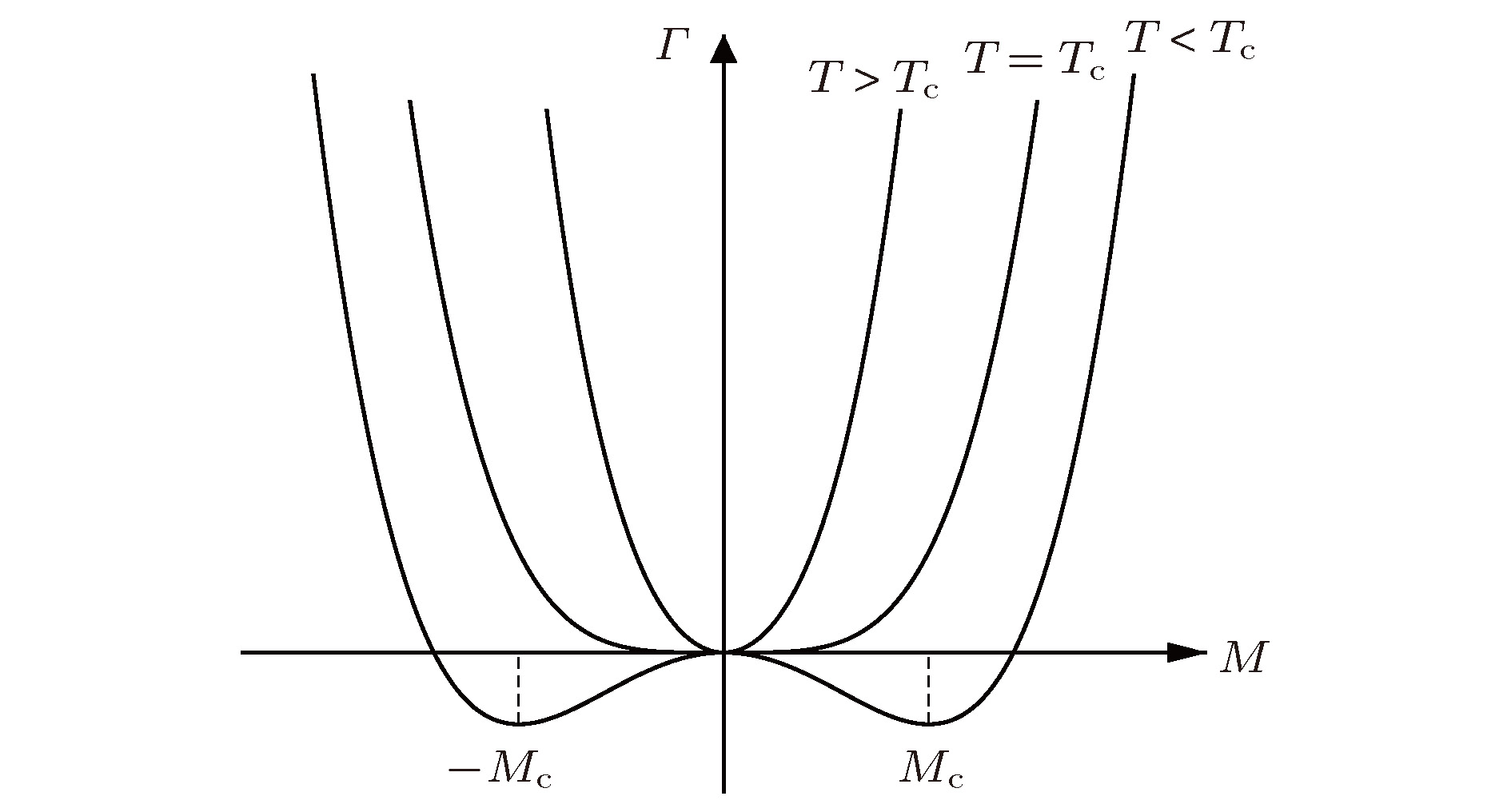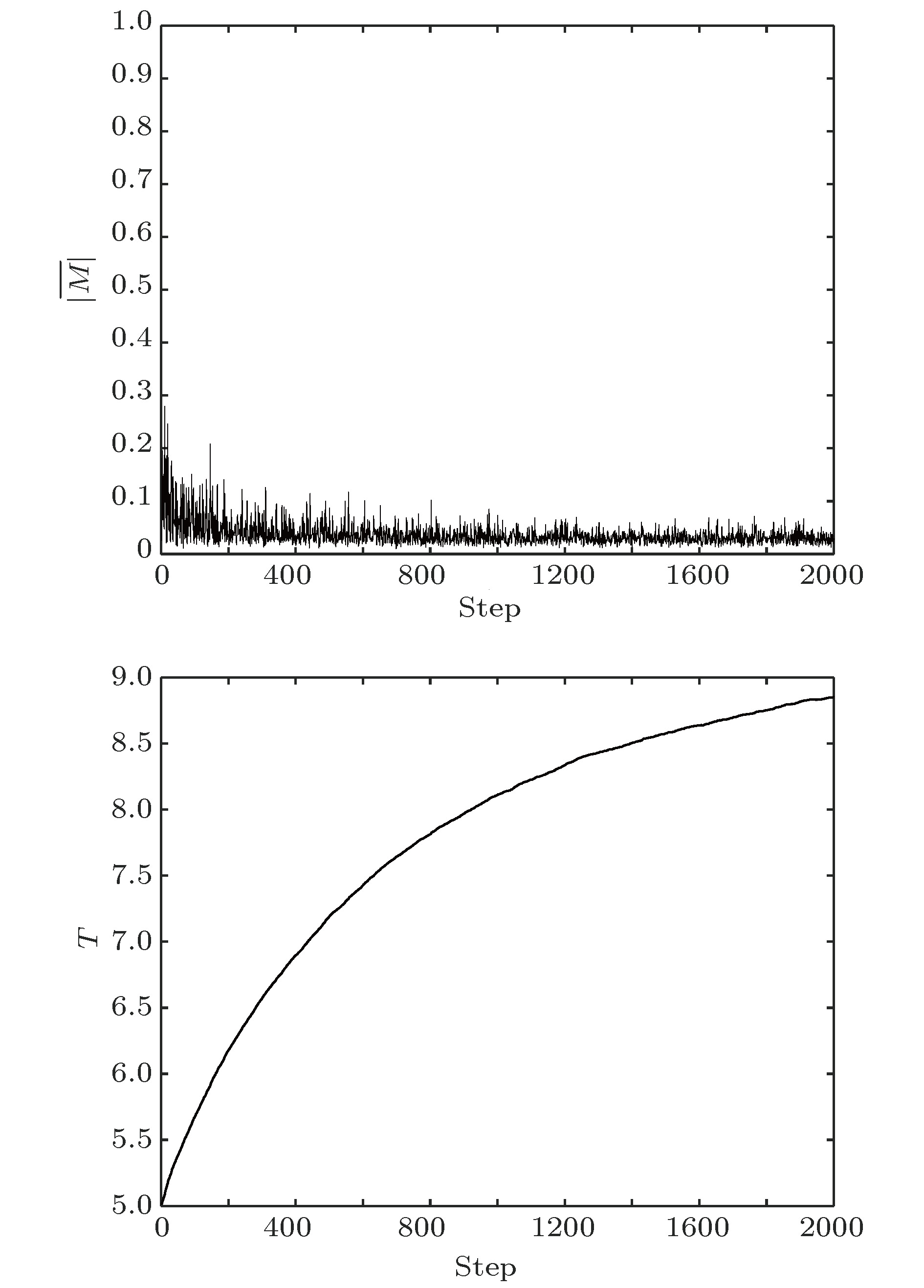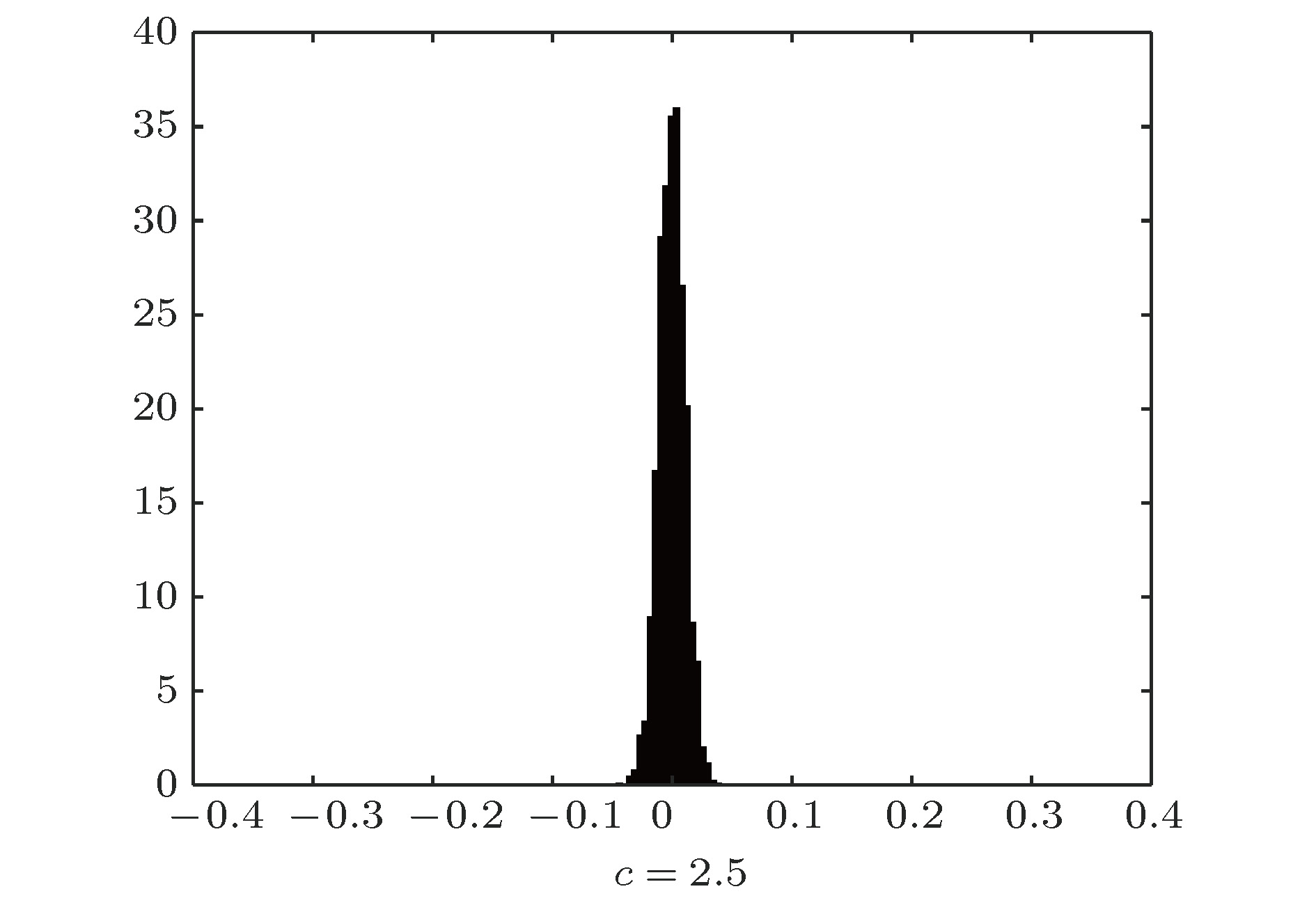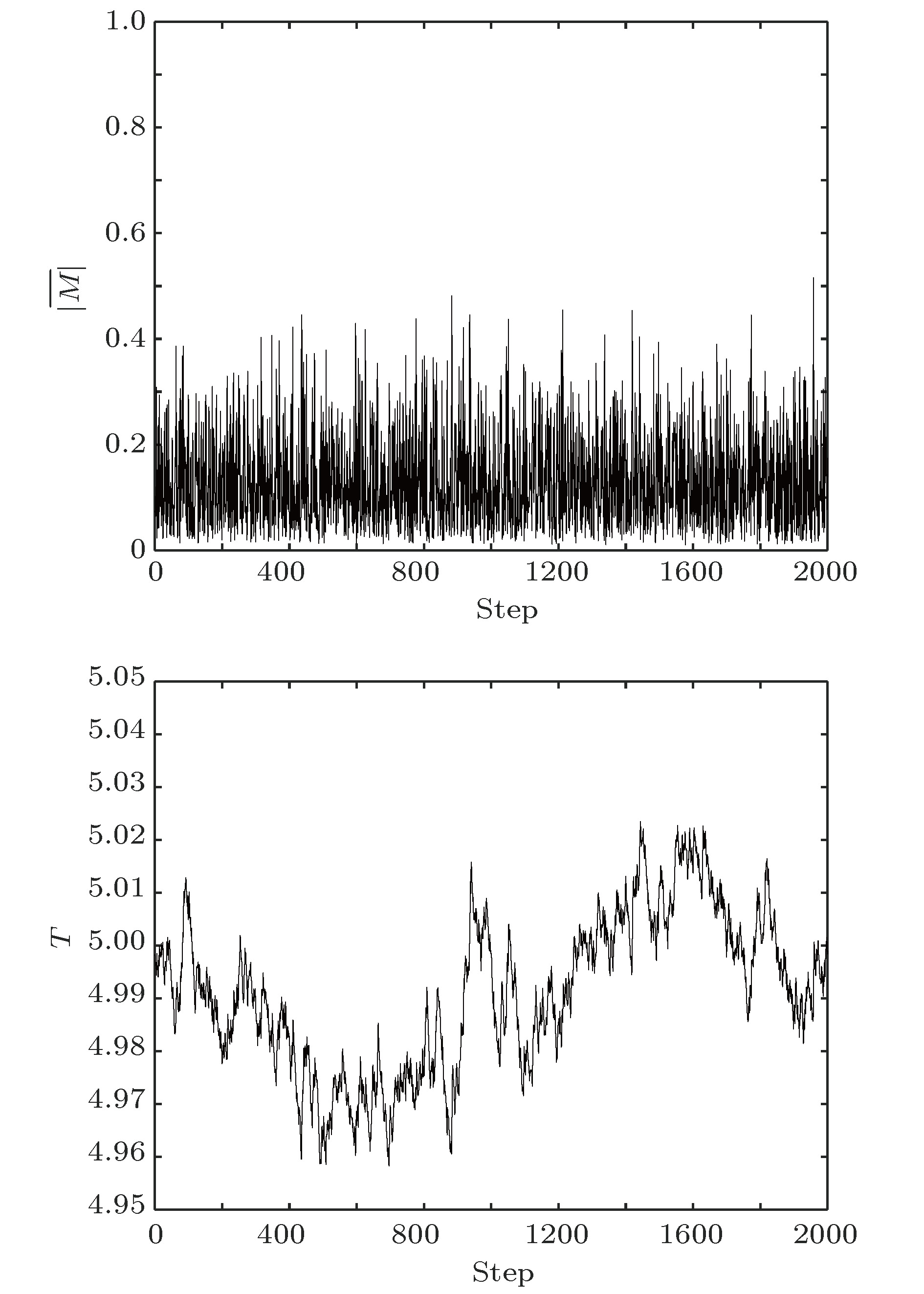-
Entering the information era, the formation of public opinion is largely associated with the complex system constructed by the Internet, thereby possessing new characteristics. The formation of public opinion is the result of the interaction of individual behavior with social environment. In reality, the environmental factor and the individual behavior are usually related to each other and co-evolve with time. Based on the Ising model, in this paper established is an opinion formation model that includes the process of the accumulation and digestion of the social tension. In the model, a parameter named effective dissolving factor c is designed to represent the extent of the interaction between the system and the social environment. A two-dimensional dynamical system is involved in the model to describe the dynamics of individual behavior and social tension. The co-evolution behavior of the system is studied. Based on the Landau mean field theory, the stationary states of the dynamical system under different parameter values, i.e. the value of effective dissolving factor c, their stability and bifurcation of the system, are analyzed. Finally, the computer simulation method is used to verify the results. The research shows that with the co-evolution mechanism of the system, our model exhibits certain self-organization characteristics. When the effective dissolving factor c is smaller than the threshold value, the system will reach final consensus opinion, resulting in a macroscopically ordered state. Otherwise, when the dissolving factor c exceeds a threshold value, the system is stable in the disordered state. It is interesting to find that there is such a critical value of the parameter that it leads the system to be self-organized into a critical state from any initial state. The future detailed investigation on the criticality of the co-evolving system is also suggested, such as testing whether the system has evolved into the critical state according to the finite-sized scaling theory and calculating the critical exponent of the system. In addition, in this paper provided is a new perspective to tackle practical problems in public opinion. Based on the mechanism of the formation of public opinion revealed by our model, researchers are encouraged to conduct studies on how to monitor the state of public opinion more precisely and to predict the tipping point of the system evolution.
-
Keywords:
- opinion formation /
- Ising model /
- co-evolution /
- self-organized criticality
[1] 刘怡君, 李倩倩, 牛文元 2013 管理评论 25 167
 Google Scholar
Google Scholar
Liu Y J, Li Q Q, Niu W Y 2013 Mgt. Rev. 25 167
 Google Scholar
Google Scholar
[2] 程洁, 狄增如 2008 力学进展 38 733
 Google Scholar
Google Scholar
Cheng J, Di Z R 2008 Adv. Mech. 38 733
 Google Scholar
Google Scholar
[3] Castellano C, Vilone D, Vespignani A 2003 EPL 63 153
 Google Scholar
Google Scholar
[4] Galam S 2002 EPJ B 25 403
[5] Sznajd-Weron K, Sznajd J 2000 Int. J. Mod. Phys. C 11 1157
 Google Scholar
Google Scholar
[6] Deffuant G, Neau D, Amblard F, Weisubuch G 2000 Adv. Complex Syst. 3 87
 Google Scholar
Google Scholar
[7] Hegselmann R, Krause U 2002 J. Artif. Soc. S 5 2
[8] Cheng J, Hu Y, Di Z, Fan Y 2010 Comput. Phys. Commun. 181 1697
 Google Scholar
Google Scholar
[9] Stauffer D, Ortmanns H M 2004 Int. J. Mod. Phys. C 15 241
 Google Scholar
Google Scholar
[10] Holme P, Newman M E J 2006 Phys. Rev. E 74 056108
 Google Scholar
Google Scholar
[11] Kozma B, Barrat A 2008 Phys. Rev. E 77 016102
 Google Scholar
Google Scholar
[12] Vazquez F, Victor M E, Miguel S M 2008 Phys. Rev. Lett. 100 108702
 Google Scholar
Google Scholar
[13] Cao L, Li X 2008 Phys. Rev. E 77 016108
 Google Scholar
Google Scholar
[14] Bartolozzi M, Leinweber D B, Thomas A W 2005 Phys. Rev. E 72 046113
 Google Scholar
Google Scholar
[15] Pancs R, Nicolaas J V 2007 J. Public Econ. 91 1
[16] 罗植, 杨冠琼, 狄增如 2012 61 190509
 Google Scholar
Google Scholar
Luo Z, Yang G Q, Di Z R 2012 Acta Phys. Sin. 61 190509
 Google Scholar
Google Scholar
[17] Li Z, Tang X, Chen B, Yang J, Su P 2016 Comput. Soc. Networks 3 9
 Google Scholar
Google Scholar
[18] Li Z, Tang X 2015 International Conference on Computational Social Networks Beijing, China Aug. 4−6, 2015 p74
[19] 李振鹏, 唐锡晋 2014 系统科学与数学 5 004
Li Z P, Tang J X 2014 J Syst. Sci. Math. Sci. 5 004
[20] 李振鹏, 唐锡晋 2013 系统工程理论与实践 33 420
 Google Scholar
Google Scholar
Li Z P, Tang J X 2013 System Eng. Theor. Prac. 33 420
 Google Scholar
Google Scholar
[21] de Oliveira M J 1992 J. Stat. Phys. 66 273
 Google Scholar
Google Scholar
[22] Pereira L F, Moreira F B 2005 Phys. Rev. E 71 016123
 Google Scholar
Google Scholar
[23] Fronczak A, Fronczak P 2017 Phys. Rev. E 96 012304
[24] Chen H, Li G 2018 Phys. Rev. E 97 062304
[25] Stella A L, Vandergande C 1989 Phys. Rev. Lett. 62 1067
 Google Scholar
Google Scholar
[26] Chen C Q, Dai Q L, Han W C, Yang J Z 2017 Chin. Phys. Lett. 34 28901
 Google Scholar
Google Scholar
[27] Wang X J, Zhang Y, You J W 2018 Chin. Phys. B 27 98901
 Google Scholar
Google Scholar
[28] Huang J Y, Jin X G 2019 JSTAT 2019 013202
 Google Scholar
Google Scholar
[29] Niu R W, Pan G J 2016 Chin. Phys. Lett. 33 68901
 Google Scholar
Google Scholar
[30] Bak P, Chao T, Kurt W 1987 Phys. Rev. Lett. 59 381
 Google Scholar
Google Scholar
[31] Bak P 1996 How Nature Works: The Science of Self-Organized Criticality (New York: Springer) pp1−32
[32] Brunk G G 2002 JJPS 3 25
 Google Scholar
Google Scholar
[33] Brunk G G 2002 JTP 14 195
-
-
[1] 刘怡君, 李倩倩, 牛文元 2013 管理评论 25 167
 Google Scholar
Google Scholar
Liu Y J, Li Q Q, Niu W Y 2013 Mgt. Rev. 25 167
 Google Scholar
Google Scholar
[2] 程洁, 狄增如 2008 力学进展 38 733
 Google Scholar
Google Scholar
Cheng J, Di Z R 2008 Adv. Mech. 38 733
 Google Scholar
Google Scholar
[3] Castellano C, Vilone D, Vespignani A 2003 EPL 63 153
 Google Scholar
Google Scholar
[4] Galam S 2002 EPJ B 25 403
[5] Sznajd-Weron K, Sznajd J 2000 Int. J. Mod. Phys. C 11 1157
 Google Scholar
Google Scholar
[6] Deffuant G, Neau D, Amblard F, Weisubuch G 2000 Adv. Complex Syst. 3 87
 Google Scholar
Google Scholar
[7] Hegselmann R, Krause U 2002 J. Artif. Soc. S 5 2
[8] Cheng J, Hu Y, Di Z, Fan Y 2010 Comput. Phys. Commun. 181 1697
 Google Scholar
Google Scholar
[9] Stauffer D, Ortmanns H M 2004 Int. J. Mod. Phys. C 15 241
 Google Scholar
Google Scholar
[10] Holme P, Newman M E J 2006 Phys. Rev. E 74 056108
 Google Scholar
Google Scholar
[11] Kozma B, Barrat A 2008 Phys. Rev. E 77 016102
 Google Scholar
Google Scholar
[12] Vazquez F, Victor M E, Miguel S M 2008 Phys. Rev. Lett. 100 108702
 Google Scholar
Google Scholar
[13] Cao L, Li X 2008 Phys. Rev. E 77 016108
 Google Scholar
Google Scholar
[14] Bartolozzi M, Leinweber D B, Thomas A W 2005 Phys. Rev. E 72 046113
 Google Scholar
Google Scholar
[15] Pancs R, Nicolaas J V 2007 J. Public Econ. 91 1
[16] 罗植, 杨冠琼, 狄增如 2012 61 190509
 Google Scholar
Google Scholar
Luo Z, Yang G Q, Di Z R 2012 Acta Phys. Sin. 61 190509
 Google Scholar
Google Scholar
[17] Li Z, Tang X, Chen B, Yang J, Su P 2016 Comput. Soc. Networks 3 9
 Google Scholar
Google Scholar
[18] Li Z, Tang X 2015 International Conference on Computational Social Networks Beijing, China Aug. 4−6, 2015 p74
[19] 李振鹏, 唐锡晋 2014 系统科学与数学 5 004
Li Z P, Tang J X 2014 J Syst. Sci. Math. Sci. 5 004
[20] 李振鹏, 唐锡晋 2013 系统工程理论与实践 33 420
 Google Scholar
Google Scholar
Li Z P, Tang J X 2013 System Eng. Theor. Prac. 33 420
 Google Scholar
Google Scholar
[21] de Oliveira M J 1992 J. Stat. Phys. 66 273
 Google Scholar
Google Scholar
[22] Pereira L F, Moreira F B 2005 Phys. Rev. E 71 016123
 Google Scholar
Google Scholar
[23] Fronczak A, Fronczak P 2017 Phys. Rev. E 96 012304
[24] Chen H, Li G 2018 Phys. Rev. E 97 062304
[25] Stella A L, Vandergande C 1989 Phys. Rev. Lett. 62 1067
 Google Scholar
Google Scholar
[26] Chen C Q, Dai Q L, Han W C, Yang J Z 2017 Chin. Phys. Lett. 34 28901
 Google Scholar
Google Scholar
[27] Wang X J, Zhang Y, You J W 2018 Chin. Phys. B 27 98901
 Google Scholar
Google Scholar
[28] Huang J Y, Jin X G 2019 JSTAT 2019 013202
 Google Scholar
Google Scholar
[29] Niu R W, Pan G J 2016 Chin. Phys. Lett. 33 68901
 Google Scholar
Google Scholar
[30] Bak P, Chao T, Kurt W 1987 Phys. Rev. Lett. 59 381
 Google Scholar
Google Scholar
[31] Bak P 1996 How Nature Works: The Science of Self-Organized Criticality (New York: Springer) pp1−32
[32] Brunk G G 2002 JJPS 3 25
 Google Scholar
Google Scholar
[33] Brunk G G 2002 JTP 14 195
Catalog
Metrics
- Abstract views: 9065
- PDF Downloads: 88
- Cited By: 0















 DownLoad:
DownLoad:








